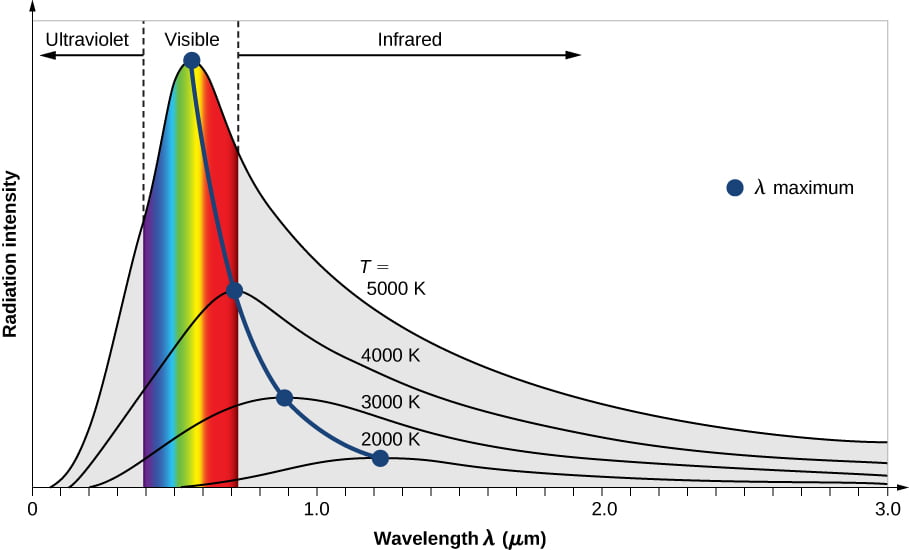Black Body Radiation: A Brief Overview
Definition: Black body radiation is the electromagnetic radiation emitted by a hypothetical perfect absorber and emitter of radiation, known as a black body. A black body absorbs all incident radiation irrespective of wavelength and emits radiation at all temperatures.
Summary:
The term “black body” originated in 1862, and experiments on black body radiation were conducted, but a comprehensive physical explanation was lacking until 1900. The classical model described a black body as an object enclosed in a cavity emitting electromagnetic waves with various modes of vibration and wavelengths. The energy exchange between the walls and the radiation inside was modeled statistically, leading to Stefan’s law and displacement law.
However, this classical model failed to explain the behavior at short wavelengths and the infinite radiation intensity. In 1900, Max Planck introduced a groundbreaking idea based on the quantization of energy, suggesting that electromagnetic radiation between the walls was quantized into discrete values or “oscillators” with specific energy levels. This departure from classical physics marked a significant shift.
The introduction of Planck’s constant, denoted as h, with a value of 6.626 x 10^(-34) joules per second or 4.136 x 10^(-15) electron volt per second, was a key aspect of this new quantum theory. The quantization of energy inside the cavity led to a more accurate prediction of black body radiation, resolving the shortcomings of the classical model
Key Characteristics:
- Wavelength Distribution: According to Planck’s law, the spectral distribution of black body radiation is characterized by a curve that peaks at a specific wavelength. As the temperature of the black body increases, the peak of the distribution shifts to shorter wavelengths, demonstrating the relationship between temperature and emitted radiation.
- Stefan-Boltzmann Law: This law describes the total energy radiated by a black body and states that the power emitted per unit surface area is proportional to the fourth power of the black body’s absolute temperature (T). The Stefan-Boltzmann constant is integral to this relationship.
- Wien’s Displacement Law: This law establishes a relationship between the temperature of a black body and the wavelength at which the radiation is most intense. It states that the product of the temperature and the peak wavelength is a constant.
Significance:
- Foundation for Quantum Theory: Planck’s formulation of black body radiation played a pivotal role in the development of quantum theory. His introduction of quantized energy levels challenged classical physics and laid the groundwork for modern quantum mechanics.
- Astrophysics and Cosmology: Understanding black body radiation is crucial in astrophysics for analyzing the radiation emitted by stars and other celestial bodies. It is also relevant in cosmology for studying the cosmic microwave background radiation, a remnant from the early universe.
Applications:
- Thermography: Infrared cameras and thermal imaging devices utilize principles related to black body radiation to detect and visualize variations in temperature.
- Energy Efficiency: Understanding black body radiation is essential in designing efficient energy systems, such as solar panels, where absorption and emission of radiation are key factors.
In conclusion, black body radiation serves as a fundamental concept in physics with applications ranging from astrophysics to energy technologies. Its theoretical foundations have significantly shaped our understanding of the quantum nature of matter and radiation.








